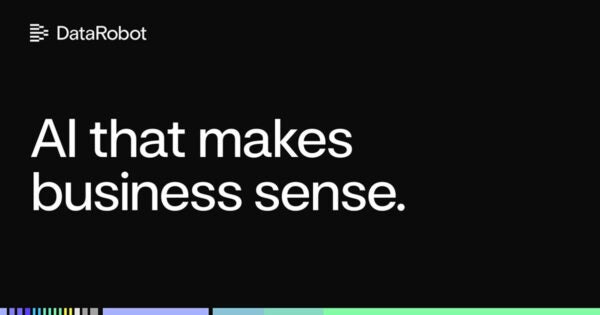Making Decisions Less Painful
Beware the Shiny Objects No shocker here: You have to make decisions in work and in life. It would seem the choices you make get harder and have bigger, longer-lasting consequences as one gets older—adulting, right? But many of us had to make at least a few huge decisions right out of the gate, for […]
Beware the Shiny Objects
No shocker here: You have to make decisions in work and in life.
It would seem the choices you make get harder and have bigger, longer-lasting consequences as one gets older—adulting, right? But many of us had to make at least a few huge decisions right out of the gate, for instance choosing a college and signing up for many years of college loan repayments (or not).
Unless you can latch on to someone else to manage your shit, you’ve got to make choices.
Not to say that allowing someone else to manage a subset of decisions is a bad thing but there’s the extreme example of never growing up and hoping your parents figure out your life. Likewise, for married couples ideally it’s not just one person making all the choices—for example if your spouse is good at planning travel and you’re better at fixing the house that’s a great division of decision-making efforts.
Anyway, making choices is part of the game. Literally you’ll be in a world of pain if you don’t.
And you have a time limit for most decisions. If you keep waffling around in your mind things could get bad real quick.
…a man, being just as hungry as thirsty, and placed in between food and drink, must necessarily remain where he is and starve to death.
— Aristotle, On the Heavens
How to Tackle Decisions
Well, you could try crying about it as an initial step.
Personally, I prefer going straight to a method to get it done.

Here are a few methods. Of course, there are many more, especially if you get into the realm of choosing problems to address for quality concerns and stuff like that. But really I think these three are the best core methods that can give you a solid start for every work and personal decision.
Method 1: Random
Yes. You can just choose something randomly. Often this is better than the problems that would be caused by delaying a choice.
Flip a coin. Roll the dice. People will think you’re wild! Maybe even leadership material!
Sometimes, making the wrong choice is better than making no choice. You have the courage to go forward, that is rare. A person who stands at the fork, unable to pick, will never get anywhere.
—Terry Goodkind, Wizard’s First Rule
Regardless of showmanship, a decision has to be made. The others affected will adapt. Or leave. But usually not.
The downside is it’s hard to tell beforehand if a random choice will have devastating results down the line.
Randomness goes hand in hand with arbitrariness—maybe it’s not totally random, you had some reason regardless of how illogical. Like maybe you have a choice between three similar cars so you buy one based on the color.
But beware the allure of the shiny object!
This method is particularly good for obviously trivial situations. When I was still an intern (or maybe just newly hired fulltime) at my first tech job after college, we were at a large company dinner at an Italian restaurant. The Chief Engineer wanted to select the first bottle of wine for the table, but wasn’t sure what to get. I think as a joke he asked me in front of everybody, me being the youngest person there looking like I wasn’t even old enough to legally drink, “Sam what wine should we get?” And without hesitation I said Cabernet Sauvignon. And that’s what we got. The Chief laughed and said “Who says I can’t delegate?” But why did I say that response? I don’t remember, I think I had simply had that wine before and already saw it on the menu. In that case a quick arbitrary decision was very appropriate (and funny).
When Not to Go Full Random
If you’re a manager in a tech company responsible for choosing, for example, what chip a device should be developed with, random should be augmented. Maybe you have experience with a particular chip or chip company. But choosing the chip based on your personal favorites may not be good enough. This happened in a company I worked for—a middle manager was trying to force his favorite chip. I didn’t like that decision because that manager was not doing any technical work, so a better quick decision would have been to ask at least one of the engineers which chips they have a preference for.
A positive variation: Later at the same company—when we were planning to have me program a microcontroller in a mobile robot manipulator—the decision of a chip was to use something similar to what others in the company already had used. And my choice of programming interfaces (IDE and JTAG debugger) was made easy—I just copied what the EEs (electronics engineers) had already been using even though the philosophy in the software group was to avoid Windows almost to comical levels, but I didn’t care, I use any and all OSes. Worked out great. Not entirely random, not entirely arbitrary, but also didn’t require a lot of decision-making energy/time.
Method 2: Requirements
A simple list of things you need can go a long way for choosing one option or another.
And you might be surprised that the choice that meets all (or hopefully most) requirements is not the one that’s the favorite in your mind. Maybe the right choice isn’t the “shiny object.”
On the other hand, sometimes there’s too many requirements or just plain silly ones. There was a small ground robot project I worked on for many years, and by small I mean it can be carried on your back. It was said that the original government requirements that flowed down included a trailer hitch!
If you can come up with a reasonable and not too large list of requirements you’ll be ahead of the game.
You’d be surprised how many tech projects I’ve worked on with either zero or incomplete written requirements. So I fill in the blanks even if I’m just supposed to be a coder. It’s worth the time, and often it only takes a couple hours (maybe even minutes), compared to having to redo a lot of technical work during the next weeks/months/years. Yes requirements do change but having a written list of the current requirements is super helpful if you want to actually release a product at some point.
I’ve written and implemented based on requirements successfully in tech jobs…but also in my personal life. For example, when I made the initial decision to move across the country to California, I then had the very difficult task of finding a place to live. I made a list of requirements, and then put the really important deal breakers at the top of the list and the least concerning ones at the bottom—the “desirements.” I also knew who my roommate would be and incorporated their requirements and desirements into the list too. In the end, this worked out surprisingly well considering I was doing this all remotely from Boston, and we moved to Los Angeles. Yes there are a few problems with the building but there are with every building.
Method 3: Decision Matrices
A decision matrix lets you offload preferences out of your mind into a table of numbers. And then, like a somewhat less mysterious Ouija board, it gives you an answer.
This doesn’t require any special tools or math knowledge. You can even just write it by hand. The easiest way is with a spreadsheet. Let Excel tell you the way.
As a bonus, you now have a document to show people who later come sniffing around wanting to know how we came to this decision.
To make one, you need a finite list of your options. Don’t keep adding more, just sit down and figure out the full list of options—but don’t prematurely remove any from the list, let the table do the talking.
Then you need criteria—either requirements or a list of something, maybe features of the choices even if not all choices have those features. Ideally you also assign weights so that the most important criteria have the biggest weights.
Here’s a spreadsheet screenshot based on a template I found here by doing a quick search. I’m sure you can search for lots of other templates or just make a simple one yourself, you don’t need to get fancy. Ask your favorite AI chat for more info.

In that example, Option B is the best choice.
The game is made up and the points don’t matter.
—Whose Line Is It Anyway?
Although it may look mathematical, there is an arbitrariness to a decision matrix—you’re making up the weight values. And the point ratings. However, that’s also a great advantage.
If you’re on a team choosing an industrial robot, and you’re the one who has to, for instance, set up and program the robot controller, then this is your chance to adjust the weights / ratings to make your future a lot more sane. It doesn’t matter if other people who aren’t going to be anywhere near the code prefer other choices with different controllers as they aren’t the ones who will do the work. And if you can explain it will be easier to maintain—and even better, more robust—they will start to come around to your decision strategy.
Just don’t give in too easily.
Once upon a time in a biotech company we had to buy a new industrial robot arm which I would be programming and integrating. About five or six options from various companies were put on the list. I investigated all of them. I had a manager who literally wanted to choose the shiny one.
But with my handy decision matrix, and a quantum of persistence, I swayed the decision to my #1 choice and saved myself—and others—a lot of headaches and that sub-project worked out swell.



















